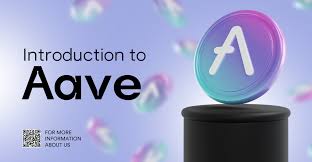AAVE, or African American Vernacular English, is a distinct aave variety of English spoken primarily by Black communities in the United States. Its roots trace back to the linguistic practices of enslaved Africans and have evolved over centuries, shaping the way people communicate not just within Black communities but also in broader cultural contexts. This article explores the origins of AAVE, its linguistic features, its ongoing evolution, and its cultural significance.
The Origins of AAVE
AAVE is believed to have emerged as a result of the linguistic convergence between African languages spoken by enslaved Africans and the English spoken by European colonizers. During the transatlantic slave trade, enslaved Africans were forcibly taken from various parts of West and Central Africa. They were often placed together in diverse, multi-lingual environments, leading to the development of a pidgin—a simplified form of communication used to bridge the gap between speakers of different languages. Over time, this pidgin evolved into a creole language and later, into the distinct variety of English known today as AAVE.
The linguistic patterns of AAVE reflect these early African influences. For example, certain grammatical structures in AAVE, such as the use of habitual “be” (e.g., “She be working”), can be traced back to African languages that use verb forms to indicate habitual actions.
Linguistic Features of AAVE
AAVE is not simply a “slang” or informal way of speaking, as it is often portrayed in popular media. It is a fully developed and systematic dialect with its own rules of grammar, vocabulary, and pronunciation. Some of the key linguistic features of AAVE include:
- Phonological Features:
- Consonant Cluster Reduction: In many cases, AAVE speakers may simplify consonant clusters (e.g., “best” becomes “bes”).
- Th-Fronting: The “th” sound in words like “this” and “that” may be pronounced as a “d” or “t” sound (e.g., “this” becomes “dis”).
- Vowel Shifts: Certain vowels are pronounced differently, such as the diphthong in “ride” which may sound more like “rahhd.”
- Grammatical Features:
- Habitual “Be”: One of the most distinctive features of AAVE is the use of the verb “be” to indicate habitual or ongoing action. For example, “She be working” means that she is regularly or consistently working.
- Null Copula: In AAVE, the verb “to be” may be omitted in certain contexts, such as in “He tall” instead of “He is tall.”
- Use of “Ain’t”: AAVE commonly employs “ain’t” as a contraction for “isn’t,” “aren’t,” or “haven’t” (e.g., “He ain’t coming”).
- Vocabulary and Lexicon:
- AAVE has contributed a significant amount of vocabulary to mainstream American English, particularly through music, entertainment, and the internet. Terms like “cool,” “chill,” “hype,” and “lit” have roots in AAVE and are widely used today.
- New words and phrases continue to emerge, often from Black cultural expressions, including terms associated with music genres like hip-hop or elements of street culture.
AAVE in Popular Culture
AAVE has had a profound influence on American popular culture, especially through music, film, and social media. Its widespread use in hip-hop and rap music has brought AAVE to the forefront of global attention. Artists like Tupac Shakur, Jay-Z, Kendrick Lamar, and Beyoncé have used AAVE to convey themes of identity, struggle, and empowerment, often blending it with standard English to create a powerful, resonant voice.
Moreover, AAVE has also permeated mainstream media, influencing the speech patterns of both Black and non-Black individuals. Many non-Black people, especially younger generations, adopt AAVE terms or phrases without fully understanding their cultural context. While this can lead to appropriation and misrepresentation, it also highlights AAVE’s significance in shaping the way language evolves and influences social interactions.
The Evolution of AAVE
AAVE continues to evolve, just like any other language or dialect. The rise of the internet and social media platforms, such as Twitter, Instagram, and TikTok, has accelerated the spread of AAVE, introducing new phrases and linguistic trends. Memes, viral videos, and hashtags often use AAVE expressions, leading to rapid adoption among younger, diverse audiences.
At the same time, AAVE faces challenges when it comes to perceptions of legitimacy and respect. Throughout history, AAVE speakers have often faced prejudice, with their speech labeled as “incorrect” or “improper” by mainstream society. This discrimination is tied to broader issues of racism and classism, as language is often a marker of social identity. Many linguists and cultural advocates argue that AAVE, like all dialects, should be respected as a valid and legitimate form of communication.
AAVE and Linguistic Justice
The ongoing debate over AAVE often centers on issues of linguistic justice. In education, for example, there is a growing push for educators to embrace AAVE in the classroom, particularly in schools serving Black students. Recognizing AAVE as a legitimate dialect can improve literacy and communication skills for students who speak it at home, as it affirms their cultural identity while also helping them learn Standard English.
Furthermore, AAVE’s status in the broader society continues to evolve as more people acknowledge the richness and historical significance of the dialect. Embracing linguistic diversity and recognizing the validity of AAVE is a crucial step in combating linguistic prejudice and fostering a more inclusive society.
Conclusion
AAVE is far more than a regional dialect or a form of slang; it is a rich and historically significant variety of English that reflects the cultural, social, and political experiences of Black Americans. From its roots in the African diaspora to its ongoing influence in global culture, AAVE continues to shape and be shaped by the people who speak it. As society becomes more aware of the power of language, the recognition and respect of AAVE will be crucial in ensuring linguistic justice and cultural empowerment for generations to come.

